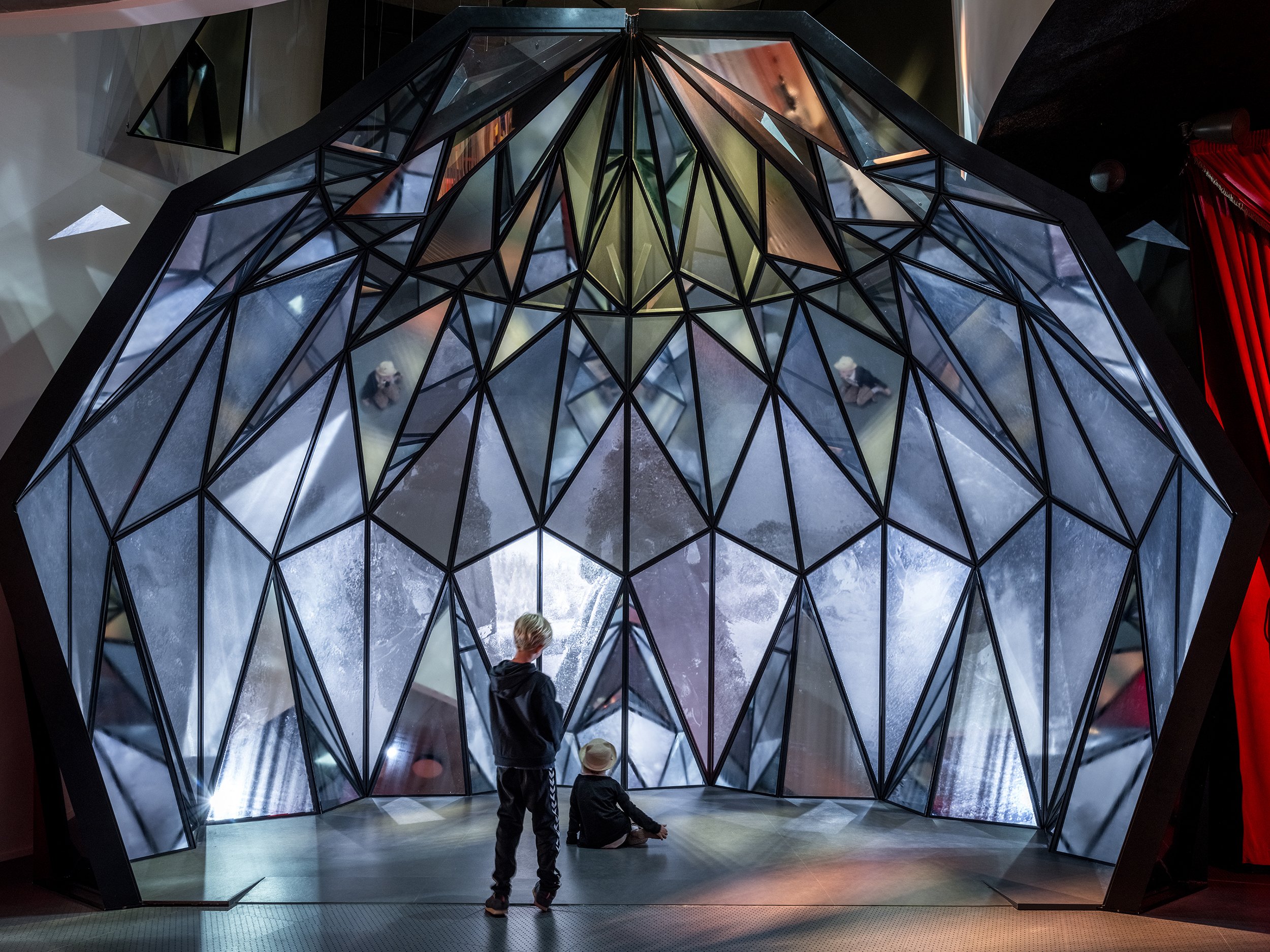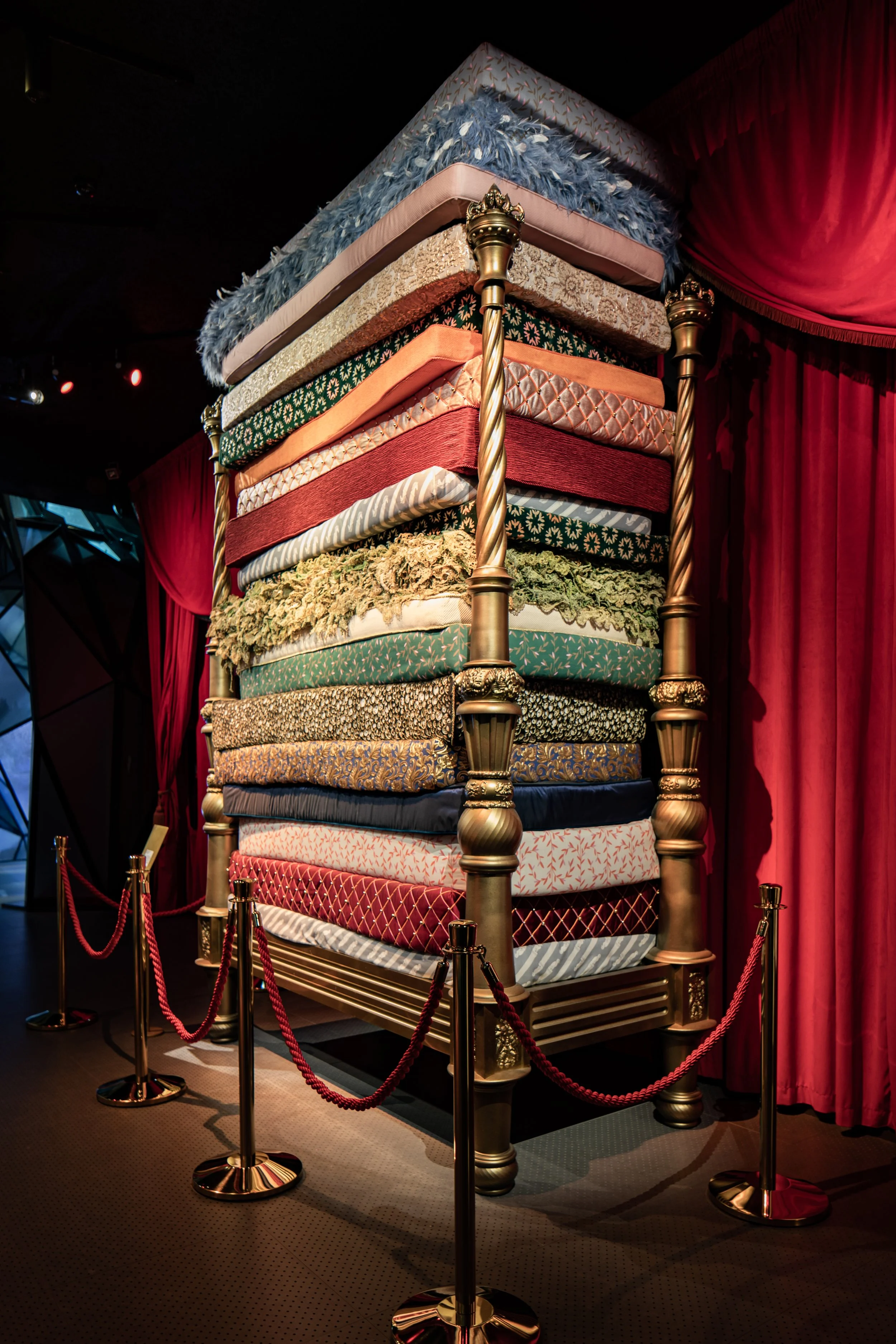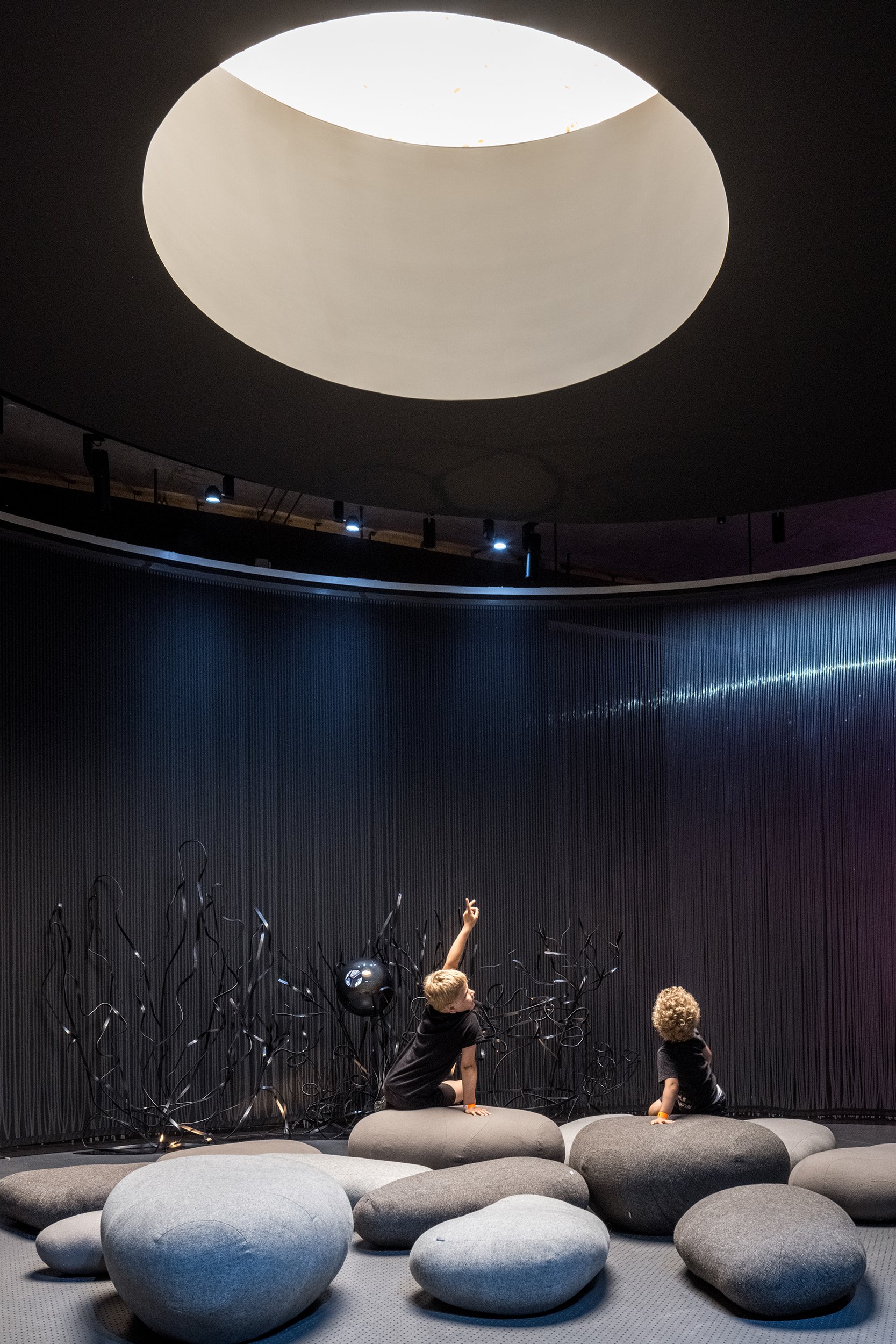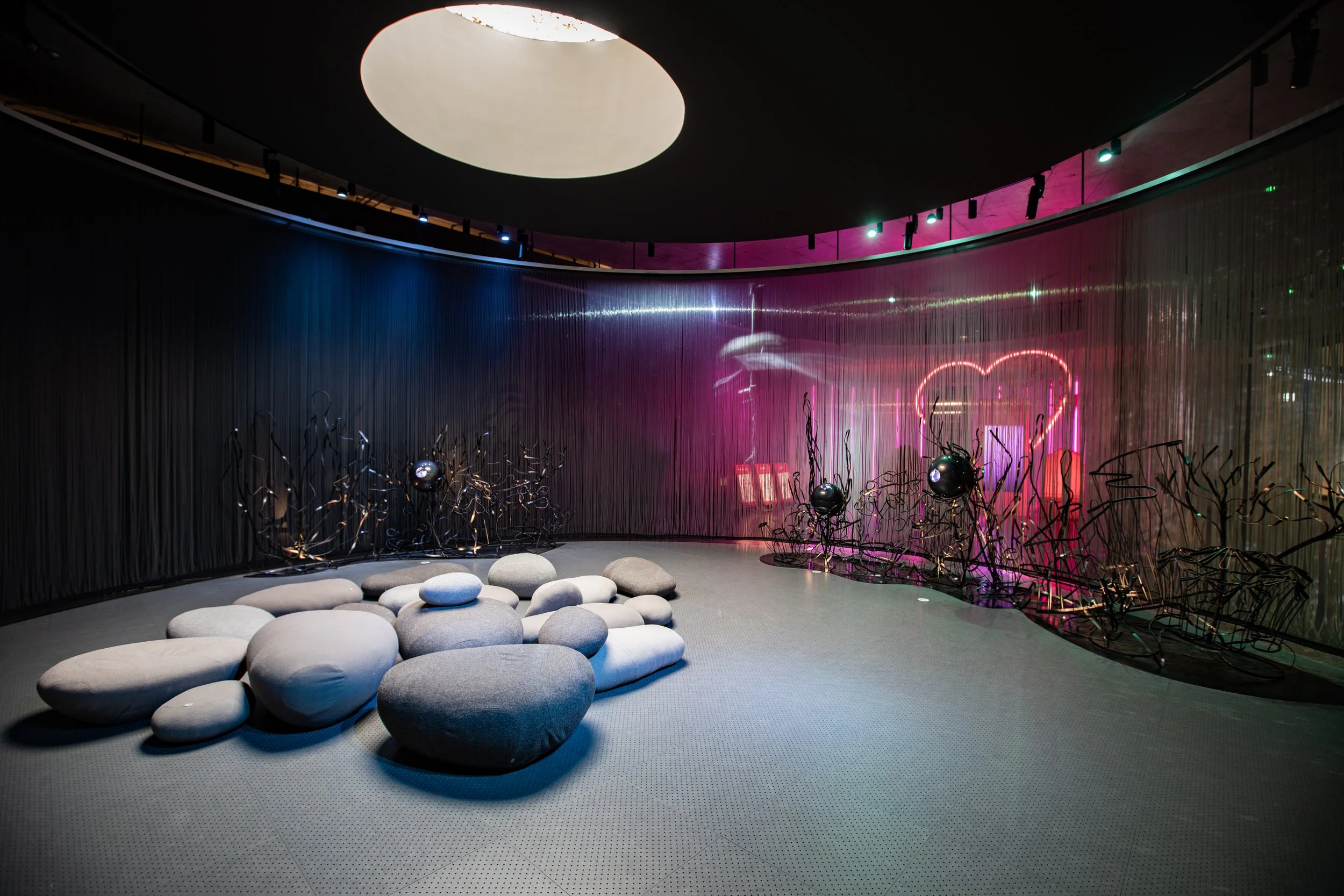The New Hans Christian Andersen Museum - Odense
Time scale: 2016-2021
Size: 5600m²
My Role: Design lead and Creative direction
Project Overview: In 2016 Event won a competiton to develop a content concept for a new museum for Hans Christian Andersen in Odense- Denmark.
This informed an architectural competition which was won by by Japanese architect Kengo Kuma.
The ambition for the project was that the building and the exhibition were an interconnected whole that captures the spirit of Andersen and brings out the essence of the City of Odense at the same time.
The museum concept draws inspiration from Hans Christian Andersen’s life, his inspiration, his imaginative processes and the imagery, atmosphere and wonder inherent in his stories.
The museum experience is like an immersive fairytale in its own right. It’s based on the concept that the museum sits on the line between reality and fairytale, at the place where the border is so thin that it’s possible to pass through it. The line is represented as a physical wall that runs along the ramp that connects the Biographical Realm and the Fairytale Realm. On one side of the wall is the Biographical - a largely black and white world informed by Andersen’s memories; on the other is the Fairytale - a colourful, sensory place that immerses visitors in the stories.
The overall approach pushes the boundaries of the ‘expected’ museum experience. All of the elements work closely together to create an overall world for visitors to explore, a world that delights but also surprises, as things are often not as they seem. Audio is one of the principal tools in delivering the sense of immersion in a world where fairytale logic applies: inanimate things become animate; the quotidian laws of physics don’t apply; time is both linear and non-linear; up is down, down is up ...
The creation of this immersive world means that all individual exhibits need to adhere to the overall design ‘rules’ of the exhibition. This doesn’t mean that everything should be uniform and boring, but that visitors can believe that every exhibit makes sense within the nonsensical, topsy-turvy world of the Andersen museum.
My tasks included:
I undertook the pitch and interview, winning the job.
I was part of the judging panel for the architecture competition - leading to the appointment of KKAA
I worked closely with the architect and building team to develop an seamless and integrated environment
I worked with wider client team, including curators, educators, designers and managers to conceive and develop an overarching vision for project.
I led the team to develop design through all design stages in accordance with vision, cost and programme.
I liased with key stake holders throughout the process to ensure input and approvals.
I worked with architects and building consultants to develop and deliver an approach to all areas of interface with the building.
I briefed and worked with consultants- Artists, specialist setworks, showcases, lighting, film makers, interactive designers.
I visited site regularly to supervise and approve all design and ensure that the required specification and design quality was met.
Concept diagrams

Concept plan

Concept plan- Developed

Concept spatial plan

Concept spatial plan- components

Concept score - mapping the visitor experience
Overarching Creative Principles
• Audio - there is very little graphic text in the museum. Most of the experience is guided by audio delivered via headset. The audio is layered, playful and extremely specific. It is essential that audio associated with any media is synched with the overall audio soundtrack that guides visitors through the museum. For the most part, audio associated with media will be delivered via headset, rather than through ambient audio speakers.
• Colour - there is a very specific and considered use of colour in the exhibition (black and white in the Biographical Realm, a set colour palette in the Fairytale Realm)
• Material -there is a simple and minimal material palate for the exhibition furniture of corian, metal, wood , acrylic and glass. There is a highlight material palate for storytelling objects which is narratively descriptive and materially authentic – eg, a swallow made of feathers, a tree made of bark.
• Illustration - certain key elements representing Andersen’s fantasised version of his life story (his autobiography is literally called ‘The Fairytale of My Life’) as well as the fairytale summaries within the Fairytale Realm (short synopses of each story that take on a different form depending on the story e.g. a newspaper, a museum-style panel, an animation concealed within a fishing buoy ...) come from a single illustrator’s hand. The illustrator in question is Sandra Rilova and her work is present not only in graphic form, but also as inspiration for some of the setworks e.g. the wireframe flowers in ‘Love’ and ‘Thumbelina.’
Design development

The Princess and the Pea

The Little Mermaid

The Little Mermaid

Wireframe nature

Love

Love

Creativity

The Snowqueens palace
Visitor Experience.
The Biographical Realm
The Biographical Realm consists of five thematic galleries connected by a ramp. The first gallery, Threshold, and the content along the Membrane Wall in the ramp, represent Andersen’s chronological life story, beginning with his birth in Odense and ending with his death. The other galleries – Travel, Love, Creativity Reflections and Transition – explore different aspects of Andersen and offer a counterpoint to the version of events he describes in his autobiography.
The spaces in the biographical realm are connected by a ramp and the ramped is edged by a physical wall that runs along the ramp and separates the biographical realm from the fairytale realm. It is
a magical and sometimes permeable boundary separating reality from fantasy. It contains HCA’s memories as layered illustrations appearing to float into focus from beyond. At points along its
length it appears to dissolve as travellers (in the form of colourful projections) from the fairytale realm appear to pass through the wall from the fairytale realm
The Fairytale Realm
The Fairytale Realm takes the form of a forest of fairytales., A colourful, sensory landscape where the hedges appear to have sunk through from the garden above.
The Membrane appears to have dissolved into the canopy setting the stories free to become fantastical.
The forest is formed from suspended canopies of varying opacities that create a unified setting. As well as allowing for separate story spaces.
1. Forest layer
The forest layer creates a fantastical forest like setting for the fairytale. It is composed of curved hanging canopies of varying materials which provide an environment, suggest a route, and create clearings of varying opacities. The canopies are composed of silicone rods set at different spacings, polar voile and voile. Externally the forest layer suggests a unified setting and internally it extends the scenography of the individual fairy-tales.
2. Nature -
Where there is no opportunity for material authenticity, objects are represented as Andersen’s imagined line. These take the form of the wire-frame, three dimensional sketch-like sculptures that represent the natural forms described by Andersen. The style is intended
to reference Andersen’s own drawings, inspiring the visitors’ imagination. The sketch-like landscapes are consistent across the entire fairytale realm, giving a unifying design language to the space as a whole. These are in the same illustrative language as all other illustrations within the museum.
3. Storytelling -
Where we can achieve the materiality and form of the objects described by Anderson, hyper-realistic objects are represented that directly reference Anderson’s descriptions.
The Children’s Realm
The scenographic landscape is a Children’s deep-play space setting designed to evoke fairytale universe. A mirrored ‘lake’, soft ‘pebbles’, scenographic flowers and plants create overall environment.
Everything is highly tactile and robust. A series of small wooden play-houses set within the wild nature landscape represent different buildings: a bakery, a barbers, a postoffice, a palace, a magician’s hut etc. Inside are prop furniture and decorations.
The playhouses are monochromatic on the outside - pale wood hue with etched or hand painted details. Inside the pods, colours, textures and shapes are vibrant, intense and intricate. Each one of the pods is distinct and individual in terms of colour, patterns and texture.
Project Images

The Snow Queens Palace

Creativity

Travel

Love

Faith

The Little Mermaid

The Princess and the Pea

The Little Mermaid

The Little Mermaid

The Little Mermaid - projection

Story Viewers

The Nightingale

The Steadfast Tin Soldier